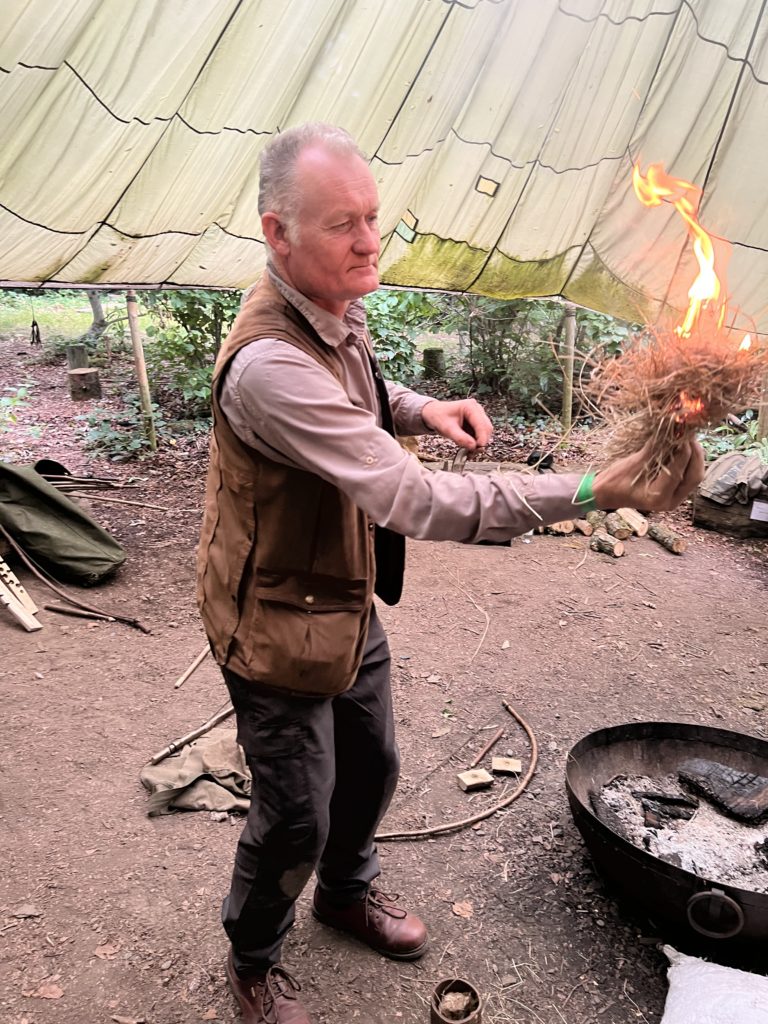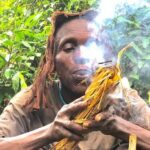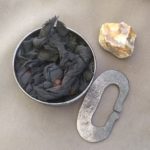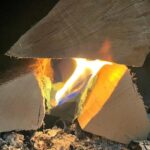The approach to friction fire lighting with bow drills in the UK slightly differs from that in other countries. In the following, these differences will be explained.

Materials and shapes of the various bow drill elements
Hearth board of the bow drill
Preferrable lime (Tilia cordata) wood is used for hearth boards. Lime sap- and heartwood are hardly distinguishable; lime has a medium density of about. 0,530 g/cm3, which is uniformly dense and not elastic. Another type of wood used for hearth boards is Sycamore (Acer pseudoplatanus), which is technically spoken hardwood with high water content but produces lots of heat quickly. It is, therefore, suitable for fire starting. Dave Watson cautioned against using sweet chestnut (Castanea sativa) wood as a hearth board, as sweet chestnut produces long fibers and is not a powder to form an ember. The shape of the hearth board is rather broad. S

Bow drill spindle
Unlike other proponents, Dave suggests using a different type of wood for the spindle. He is preferring Hazel (Corylus sp.) shoots. The spindle’s thickness should be around the size of a middle finger and the length of a handspan.
Bow drill bearing (Holding block)
Hard, green wood is used, preferably Holly (Ilex aquifolium). A fresh, green leaf (e.g., bramble) is placed between the spindle and the bearing to reduce friction.
Bow for the bow drill.
Hazelwood (Corylus sp.) or Ashwood (Fraxinus excelsior) is used. The length of the bow is about one meter, and the bow is strung by far more elastic compared to either the Swedish- or Australian way. It is a real bow, resembling a bow for shooting arrows.

The operation of the assembled bow is like everybody else’s; the same is true for catching the ember, fanning it, and starting a fire.

During GBS2022, a wide variety of materials and shapes for bow drills could be seen, and there is no right or wrong way—all types produced ember at roughly the same time with similar efforts. Bow drilling is a very versatile technique, not restricted to certain types of wood or techniques. It is essential to choose the best-suited, dry materials found directly in the forests, woodlands, or savannas and put effort into the outcome.
Bow drilling is the technique for producing fire with minimal man-made supplies in areas with low humidity worldwide. Just a paracord or similar string makes this technique more accessible to master.
.
Lessons learned from Dave Watson on bow drilling:
- Dry lime (linden) wood is ideal as a hearth board
- Hazel works very well as a spindle on a lime base
- Sweet chestnut should not be considered for friction fire lighting
- Whether a fire bow or straight stave looks like a bow does not matter: both work very well.
Global Bushcraft Symposium 2022 (GBS2022) and Dave Watson
GBS2022 was held from 27th-31st July 2022 at Llyn Tegid (Bala Lake), within Snowdonia National Park, in North Wales, UK.
Dave set up his company ‘Woodland Survival Crafts’ in 1995 following ten years of building the activities programs and the teams of instructors. In 2007, he instigated the development of the Bushcraft Professional Practice group within the Institute for Outdoor Learning, which promotes the excellent practice of wilderness-based skills within education. He was awarded Leading Practitioner within the IOL. With the Global Bushcraft Symposium 2022, Dave was a speaker and lead of the Fire Craft Theme Camps. Besides firefighting with a bow drill, Dave also presented firefighting with a friction fire hand drill under European conditions.
Dave reviewed this article on August 11, 2022, and had no objections.
Further readings about Fire-making on this website:
Creating fire with a magnifying glass
Hadza hand drill friction fire
Bow Drilling – following the method of Mattias Norberg
Giant Fennel stalks for lighting fire
Batwa pygmies traditional fire lighting method
Manketti wood for friction fire lighting
Bushscout UK’s fire bundle basket
Fire lighting with Flint & Steel
Hand drilling in UK as taught by Dave Watson
Bow drilling in Australia by Gordon Dedman
Hand drill friction fire lighting in Australia
Creating fire by hand drill in Namibia
Australian friction fire wood species
.




